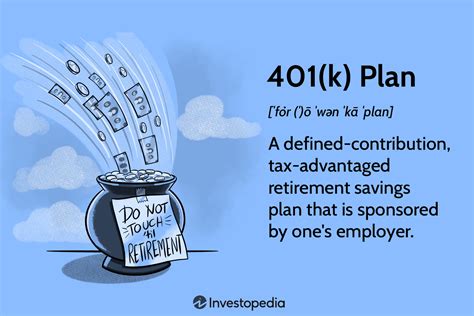
Are your retirement savings on par with others your age? Fidelity Investments’ latest analysis offers a glimpse into average 401(k) and IRA balances, providing a benchmark for individuals assessing their retirement readiness. While averages can be a useful guide, experts caution against solely relying on them, emphasizing individual circumstances and retirement goals.
401(k) and IRA Savings: A Snapshot by Age
Fidelity’s data, compiled from millions of accounts, reveals significant variations in retirement savings across different age groups. As of the end of Q1 2024, the average 401(k) balance reached $118,600, while the average IRA balance stood at $120,900. However, these figures mask considerable disparities.
For younger workers, those in their 20s, the average 401(k) balance is considerably lower, reflecting their early career stage and limited earning potential. As individuals progress through their 30s, 40s, and 50s, their savings balances tend to increase, driven by higher incomes, consistent contributions, and investment growth.
Approaching retirement age, those in their 60s typically have the highest 401(k) and IRA balances, reflecting decades of saving and investment. However, even within this age group, there can be substantial differences, influenced by factors such as career choices, investment strategies, and unforeseen life events.
Understanding the Averages: Caveats and Considerations
While Fidelity’s data provides a valuable overview, it’s essential to interpret the averages with caution. As noted by financial advisors, averages can be skewed by outliers – individuals with exceptionally high or low balances. Averages may not accurately represent the typical retirement savings of most people.
Furthermore, relying solely on averages can be misleading because it doesn’t account for individual circumstances. Retirement needs vary depending on factors such as lifestyle, health, location, and desired retirement age. A person living in a high-cost-of-living area, for example, will likely need a larger retirement nest egg than someone living in a more affordable location.
Beyond Averages: A Holistic Approach to Retirement Planning
Instead of fixating on averages, financial experts recommend taking a holistic approach to retirement planning. This involves assessing individual retirement goals, estimating future expenses, and developing a personalized savings and investment strategy.
A crucial step in retirement planning is determining how much income will be needed to maintain your desired lifestyle. This involves estimating expenses such as housing, healthcare, food, transportation, and leisure activities. It’s also important to factor in inflation, which can erode the purchasing power of savings over time.
Once you have a clear understanding of your retirement income needs, you can develop a savings plan to reach your goals. This involves determining how much to save each month or year, taking into account your current savings, expected investment returns, and time horizon.
Maximizing Retirement Savings: Strategies and Tips
Several strategies can help individuals maximize their retirement savings. One of the most effective is to take advantage of employer-sponsored retirement plans, such as 401(k)s, and contribute enough to receive the full employer match. Employer matching contributions are essentially free money and can significantly boost retirement savings over time.
Another important strategy is to diversify investments across different asset classes, such as stocks, bonds, and real estate. Diversification can help reduce risk and improve long-term returns. It’s also essential to rebalance portfolios periodically to maintain the desired asset allocation.
For those who are self-employed or don’t have access to an employer-sponsored retirement plan, IRAs can be a valuable savings tool. Traditional IRAs offer tax-deductible contributions, while Roth IRAs offer tax-free withdrawals in retirement. The choice between a traditional and Roth IRA depends on individual tax circumstances and expectations about future tax rates.
The Impact of Market Fluctuations on Retirement Savings
Retirement savings are subject to market fluctuations, which can significantly impact account balances. During periods of market volatility, it’s important to remain calm and avoid making rash decisions. Historically, the stock market has delivered positive returns over the long term, so it’s generally advisable to stay invested and ride out the ups and downs.
However, market downturns can also present opportunities for long-term investors. When stock prices decline, it may be a good time to buy more shares at lower prices. This strategy, known as dollar-cost averaging, can help reduce the average cost of investments over time.
The Role of Professional Advice in Retirement Planning
Retirement planning can be complex, and many individuals benefit from seeking professional advice. Financial advisors can help assess retirement goals, develop personalized savings and investment strategies, and navigate the complexities of retirement planning.
When choosing a financial advisor, it’s essential to look for someone who is qualified, experienced, and trustworthy. Ask for referrals from friends or family members, and check the advisor’s credentials and background. It’s also important to understand the advisor’s fees and compensation structure.
Retirement Planning for Women: Unique Challenges
Women often face unique challenges when it comes to retirement planning. They tend to live longer than men, which means they need to save more to cover their retirement expenses. They also tend to earn less than men over their careers, which can make it more difficult to save for retirement.
Furthermore, women are more likely to take time out of the workforce to care for children or other family members, which can impact their earning potential and retirement savings. To address these challenges, women need to be proactive about retirement planning and take steps to maximize their savings.
Retirement Planning for Millennials and Gen Z: Starting Early
Millennials and Gen Z have the advantage of time on their side when it comes to retirement planning. Starting early, even with small contributions, can make a big difference over the long term. Thanks to the power of compounding, even modest savings can grow substantially over several decades.
Younger workers should take advantage of employer-sponsored retirement plans and contribute enough to receive the full employer match. They should also consider opening a Roth IRA, which offers tax-free withdrawals in retirement.
Social Security: A Key Component of Retirement Income
Social Security is an important source of retirement income for many Americans. However, it’s essential to understand how Social Security benefits work and how they fit into your overall retirement plan.
The amount of your Social Security benefit depends on your earnings history and the age at which you begin claiming benefits. You can claim benefits as early as age 62, but your benefit will be reduced if you claim before your full retirement age (which is 67 for those born in 1960 or later). If you delay claiming benefits until age 70, your benefit will be significantly higher.
Healthcare Costs in Retirement: Planning for the Unexpected
Healthcare costs are a significant expense in retirement, and it’s essential to plan for these costs. Medicare provides health insurance coverage for most Americans age 65 and older, but it doesn’t cover all healthcare expenses. Many retirees also purchase supplemental Medicare policies to cover additional costs.
It’s also important to consider the potential need for long-term care in retirement. Long-term care can be very expensive, and it’s not covered by Medicare. Many people purchase long-term care insurance to protect themselves from these costs.
Inflation and Retirement Planning: Protecting Your Purchasing Power
Inflation can erode the purchasing power of savings over time, so it’s essential to factor inflation into your retirement planning. When estimating your retirement expenses, be sure to account for inflation.
One way to protect your purchasing power in retirement is to invest in assets that tend to keep pace with inflation, such as stocks and real estate. You can also consider purchasing Treasury Inflation-Protected Securities (TIPS), which are designed to protect investors from inflation.
Downsizing and Retirement: A Strategy for Reducing Expenses
Downsizing your home can be a way to reduce expenses in retirement. If you own a large home, you may be able to sell it and move to a smaller, more affordable home. This can free up cash that can be used to fund your retirement.
However, downsizing is not the right choice for everyone. It’s important to consider the emotional and practical aspects of downsizing before making a decision.
Working in Retirement: Supplementing Your Income
Working in retirement can be a way to supplement your income and stay active. Many retirees find part-time jobs or start their own businesses. Working in retirement can also provide social interaction and a sense of purpose.
However, it’s important to consider the tax implications of working in retirement. Your Social Security benefits may be reduced if you earn too much income while receiving benefits.
The Importance of Estate Planning in Retirement
Estate planning is an important part of retirement planning. It involves making arrangements for the distribution of your assets after your death. Estate planning can help ensure that your assets are distributed according to your wishes and that your loved ones are taken care of.
Common estate planning tools include wills, trusts, and powers of attorney. It’s important to consult with an attorney to create an estate plan that meets your individual needs.
Long-Term Care Insurance: Protecting Your Assets
Long-term care insurance can help protect your assets from the high costs of long-term care. Long-term care includes services such as nursing home care, assisted living, and home healthcare.
Long-term care insurance can be expensive, but it can provide peace of mind knowing that you are protected from these costs. It’s important to purchase long-term care insurance before you need it, as the cost of insurance increases with age.
Annuities: Providing Guaranteed Income in Retirement
Annuities can provide guaranteed income in retirement. An annuity is a contract with an insurance company that provides a stream of payments over a period of time.
Annuities can be either immediate or deferred. An immediate annuity begins making payments immediately after you purchase it, while a deferred annuity begins making payments at a later date.
Annuities can be a valuable tool for retirement planning, but it’s important to understand the fees and risks associated with them.
Reverse Mortgages: Tapping Into Home Equity
Reverse mortgages allow homeowners age 62 and older to borrow against the equity in their homes without having to make monthly payments. The loan balance grows over time as interest accrues, and the loan is repaid when the homeowner sells the home or passes away.
Reverse mortgages can be a way to access cash in retirement, but they can also be risky. It’s important to understand the terms and conditions of a reverse mortgage before taking one out.
The Emotional Aspects of Retirement Planning
Retirement planning is not just about numbers; it’s also about emotions. Many people experience anxiety and uncertainty about retirement. It’s important to address these emotions and develop a positive attitude about retirement.
Retirement can be a time of great joy and fulfillment. It’s a time to pursue your passions, spend time with loved ones, and enjoy the fruits of your labor.
Financial Wellness Programs: Employee Benefits for Retirement Planning
Many employers offer financial wellness programs to help employees plan for retirement. These programs may include educational workshops, financial counseling, and access to online tools and resources.
Financial wellness programs can be a valuable benefit for employees. They can help employees make informed decisions about their retirement savings and investments.
Retirement Planning for Small Business Owners
Small business owners face unique challenges when it comes to retirement planning. They often don’t have access to employer-sponsored retirement plans, and they may have to rely on their own savings to fund their retirement.
Small business owners can use a variety of retirement savings tools, such as SEP IRAs, SIMPLE IRAs, and solo 401(k)s. It’s important to choose a retirement savings plan that meets their individual needs.
Alternative Investments for Retirement Planning
Alternative investments, such as real estate, private equity, and hedge funds, can offer diversification and potentially higher returns than traditional investments. However, alternative investments are also typically more complex and illiquid than traditional investments.
It’s important to carefully consider the risks and potential rewards of alternative investments before including them in your retirement portfolio.
The Impact of Tax Law Changes on Retirement Planning
Tax laws can change frequently, and these changes can impact retirement planning. It’s important to stay informed about tax law changes and how they may affect your retirement savings and income.
You may want to consult with a tax advisor to discuss how tax law changes may impact your retirement plan.
Conclusion: Taking Control of Your Retirement Future
Retirement planning is a lifelong process. It’s important to start early, save consistently, and stay informed about your options. By taking control of your retirement planning, you can increase your chances of achieving a secure and fulfilling retirement. Don’t let averages dictate your future; create a plan that aligns with your unique circumstances and aspirations.
Frequently Asked Questions (FAQ)
1. What is the average 401(k) balance for someone in their 40s? The average 401(k) balance varies but individuals in their 40s typically have balances higher than those in their 20s and 30s, reflecting increased earning potential and consistent contributions. The exact average fluctuates with market conditions but the earlier data suggested in 2023, those between 40 and 49 years old, had an average balance of $107,000. However, this is a figure based on data from last year, 2023, and is an average from a single source.
2. How much should I be saving for retirement each month? The amount you should save each month depends on your individual circumstances, including your income, expenses, retirement goals, and time horizon. As a general guideline, financial advisors often recommend saving at least 15% of your income for retirement, including any employer matching contributions.
3. What is the difference between a traditional IRA and a Roth IRA? A traditional IRA offers tax-deductible contributions, but withdrawals in retirement are taxed as ordinary income. A Roth IRA does not offer tax-deductible contributions, but withdrawals in retirement are tax-free. The choice between a traditional and Roth IRA depends on your individual tax circumstances and expectations about future tax rates.
4. How does Social Security fit into my retirement plan? Social Security is an important source of retirement income for many Americans. The amount of your Social Security benefit depends on your earnings history and the age at which you begin claiming benefits. You can claim benefits as early as age 62, but your benefit will be reduced if you claim before your full retirement age. It is crucial to understand the estimates from the Social Security Administration, as these might not reflect the total funds you will have available upon reaching retirement age.
5. What are some common mistakes to avoid when planning for retirement? Some common mistakes to avoid include: not starting early enough, not saving enough, not diversifying your investments, withdrawing money from your retirement accounts early, and not planning for healthcare costs. Another crucial mistake is failing to adjust your plan regularly to account for life changes, economic shifts, and market volatility.









